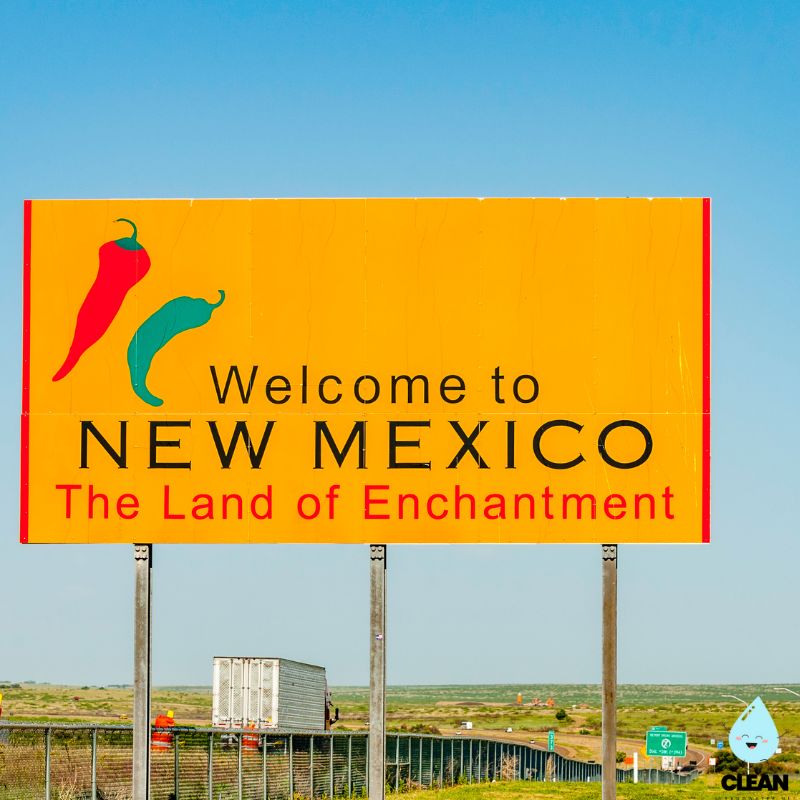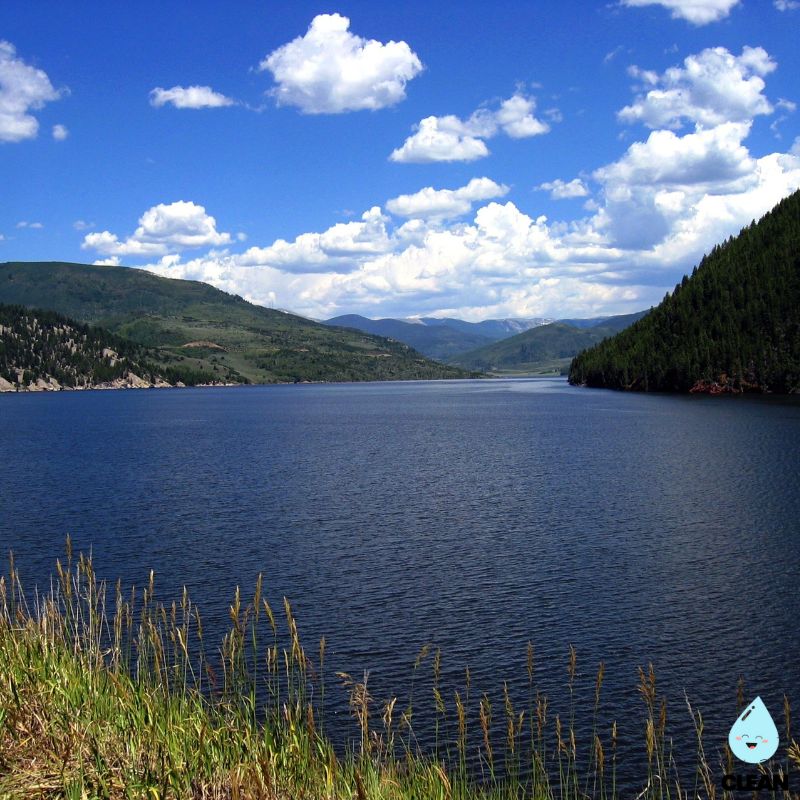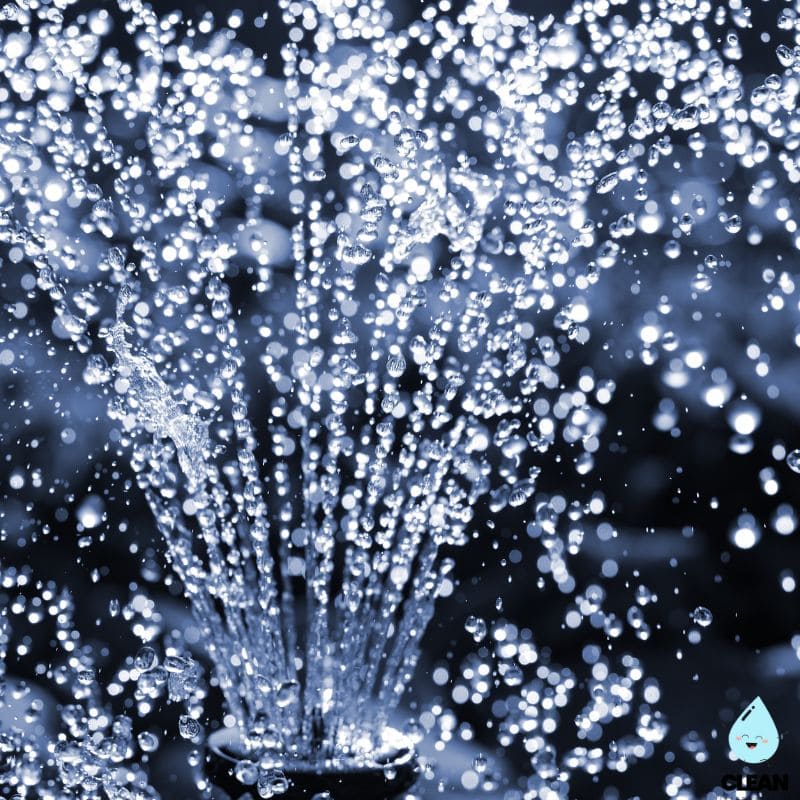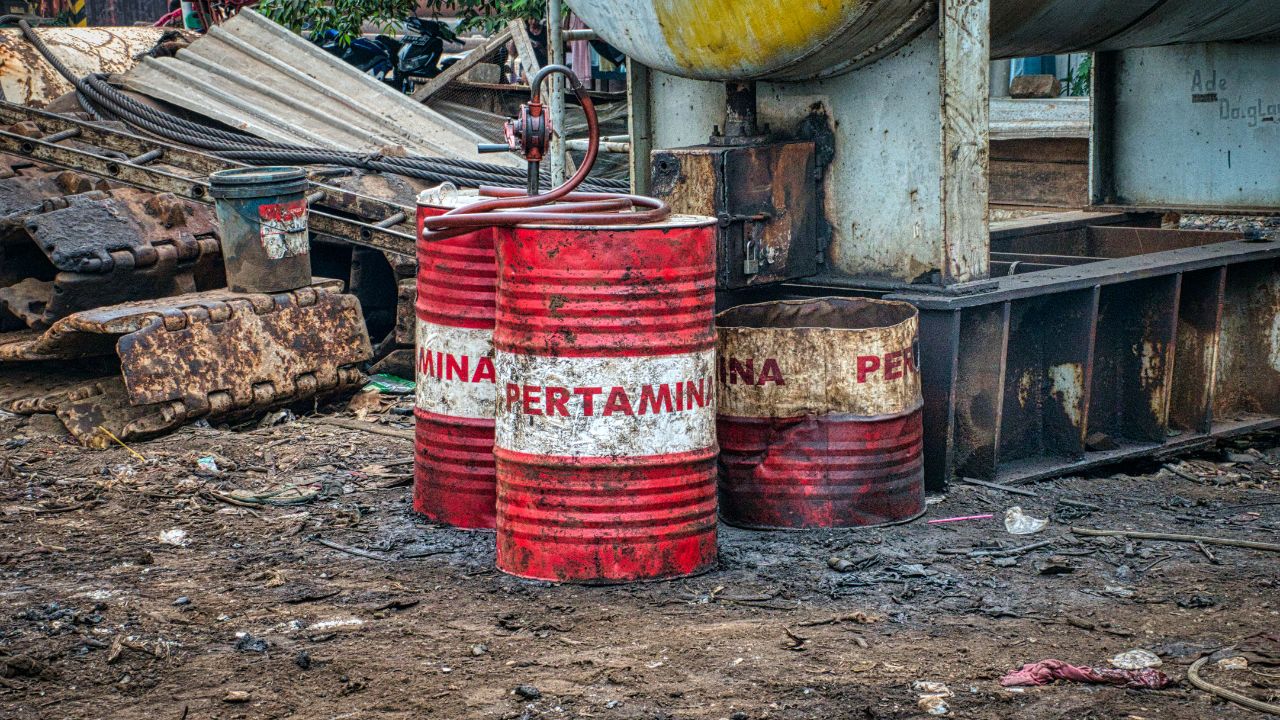New Mexico Water Quality at a Glance
emerging concerns
Is New Mexico Water Safe to Drink?
Generally Compliant, But Growing Concerns – Most New Mexico water systems meet federal standards, but the state faces significant challenges from PFAS contamination around military bases (Cannon and Holloman Air Force Bases), arsenic in groundwater, and aging infrastructure. New Mexico has some of the highest documented PFAS levels in the world around military installations, with contamination affecting drinking water and private wells. 78% of residents depend on groundwater, making protection critical.
⚠️ Key Concerns for New Mexico Residents
- PFAS “Forever Chemicals”: Highest documented levels worldwide at Lake Holloman; contamination from military firefighting foams affecting Cannon and Holloman Air Force Base areas
- Arsenic in Groundwater: Towns like Sunland Park face repeated violations; Albuquerque water contains arsenic up to 9 ppb (near the 10 ppb federal limit)
- Private Well Risks: 10% of residents (200K+ people) rely on unregulated private wells; testing responsibility falls on homeowners
- Military Base Legacy: Pentagon investigating PFAS contamination at five additional military installations beyond the confirmed Cannon and Holloman bases
Read the full report below for detailed analysis, regional data, and actionable recommendations for New Mexico residents.
New Mexico – Land of Enchantment – Water Quality Report 2025: PFAS Testing, Infrastructure Concerns & Safety across your state
New Mexico’s water infrastructure serves approximately 2.1 million residents across a vast and arid landscape, from the high desert plains to the Rio Grande valley. The state operates through a network of over 691 public water systems (563 community water systems and 128 non-transient, non-community water systems), ranging from large utilities like Albuquerque Bernalillo County Water Utility Authority, which serves over 600,000 customers, to smaller rural systems providing essential services to remote communities. New Mexico’s water sources include the Rio Grande, Pecos River, Colorado River water via the San Juan-Chama Project, and critical groundwater aquifers that sustain both urban centers and agricultural regions, with 78% of residents depending on groundwater for drinking water.
Despite innovative water management approaches, New Mexico faces unprecedented water security challenges exacerbated by climate change, persistent drought, and emerging contaminants. The state has implemented a comprehensive 50-Year Water Action Plan and recently enacted groundbreaking legislation to address PFAS contamination and enhance water conservation. New Mexico has received over $800 million in federal infrastructure investments from the Bipartisan Infrastructure Law, with additional funding specifically allocated for PFAS detection and remediation. The state’s commitment to water security is demonstrated through the Strategic Water Supply program, pioneering PFAS consumer product bans, and enhanced surface water protections that position New Mexico as a national leader in proactive water resource management.

New Mexico Water Quality: Current Status (2024-2025)
Statewide Compliance and Testing
- Overall Compliance: Most of New Mexico’s 691 public water systems meet federal Safe Drinking Water Act standards, though PFAS contamination has been detected in multiple systems statewide, with highest concentrations near military installations and urban areas.
- PFAS Monitoring: UCMR5 testing through 2025 has revealed PFAS detections in 5 out of 49 public water systems tested so far, with some of the world’s highest PFAS levels found in wildlife and plants around Holloman Lake near military bases.
- Infrastructure Investment: Over $800 million in Bipartisan Infrastructure Law funding has been allocated to New Mexico for water infrastructure improvements, with dedicated funding for PFAS detection and remediation efforts.
Major Water Sources and Challenges
- Rio Grande System: Primary surface water source serving Albuquerque and central New Mexico, with PFAS levels increasing significantly (up to 10x higher) downstream of urban areas due to wastewater discharge and urban runoff.
- Groundwater Aquifers: Critical water sources serving 78% of New Mexicans, facing challenges from drought and overuse, with PFAS contamination detected in 27 out of 117 groundwater sites tested, particularly near military installations using firefighting foam.
- Climate Change Impacts: Persistent drought conditions and declining snowpack threaten water security, with some drinking water systems losing 40-70% of treated water due to aging infrastructure and distribution system leaks.
Emerging Contaminant Response
- PFAS Regulation Leadership: New Mexico enacted comprehensive PFAS consumer product bans through House Bill 212, phasing out cookware, food packaging, and juvenile products by 2027, with full implementation by 2032.
- Military Base Contamination: Active litigation with the U.S. Department of Defense over PFAS cleanup at Cannon and Holloman Air Force Bases, with investigations ongoing at five additional military installations across the state.
- Innovative Treatment Approaches: Implementation of advanced treatment technologies including activated carbon filtration and reverse osmosis systems, with state and federal funding supporting water system upgrades to meet new EPA PFAS standards by 2029.
Strategic Water Management Initiatives
- Strategic Water Supply Program: Groundbreaking initiative established through House Bill 137 to develop brackish water resources for industrial use while preserving freshwater for communities, with $500 million reserved for state water purchases.
- Enhanced Surface Water Protections: Senate Bill 21 provides state authority over 90-95% of waterways previously left vulnerable by federal rollbacks, making New Mexico the 48th state seeking surface water permitting authority.
- Rural Community Support: Targeted federal funding through emerging contaminant programs provides grants and technical assistance to small and disadvantaged communities for PFAS testing and treatment infrastructure.
Looking Forward: 2025-2030
New Mexico’s water future hinges on successful implementation of its ambitious 50-Year Water Action Plan, which aims to reduce water consumption by 10% in rural and municipal communities by 2040 while addressing infrastructure needs including over 70 deficient dams. The state’s proactive approach to PFAS regulation, strategic brackish water development, and enhanced surface water protections positions New Mexico as a national model for water security in arid regions. However, continued federal partnership, ongoing litigation with military polluters, and sustained investment in aging infrastructure will be critical to ensuring safe, reliable water access for all New Mexicans while preserving this precious resource for future generations in an increasingly water-scarce environment.
Recommendations for New Mexico Residents

Know Your Water Source
Contact your water utility to request annual water quality reports and ask about PFAS testing results. Visit NMED’s website to access testing data and understand contaminants of concern in your area, especially if you live near military installations.

Support Water Conservation
Participate in New Mexico’s Water Education Template (WET) program and implement conservation measures like efficient irrigation and rainwater harvesting. Support utility investments in leak detection and infrastructure improvements.

Consider PFAS-Certified Filtration
For areas with known PFAS contamination, especially near military bases, consider NSF-certified activated carbon or reverse osmosis filters specifically tested for PFAS removal. Private well owners should test for PFAS and maintain their systems.

Report Water Quality Concerns
Contact your local water utility immediately for taste, odor, or color concerns. Report suspected contamination to NMED’s Drinking Water Bureau at (505) 476-8620 for investigation and follow-up action.

Stay Informed on Legislation
Follow New Mexico’s groundbreaking water security initiatives including the 50-Year Water Action Plan and PFAS consumer product bans. Engage in public meetings about regional water planning and infrastructure investments.
New Mexico Cities We Cover
Albuquerque Water Quality
Comprehensive analysis of Albuquerque Bernalillo County Water Utility Authority, New Mexico’s largest water utility serving over 600,000 customers. Includes information on water sources, treatment processes, PFAS monitoring, and infrastructure modernization.
Frequently Asked Questions
Is New Mexico’s tap water safe to drink?
Most of New Mexico’s public water systems meet federal drinking water standards and are generally safe for consumption. However, PFAS contamination has been detected in multiple systems, particularly near military installations.
The New Mexico Environment Department requires comprehensive testing across all 691 public water systems. PFAS has been detected in 5 out of 49 systems tested under UCMR5, with some areas showing elevated levels. The state has received federal funding specifically for PFAS detection and remediation, and has enacted pioneering legislation to phase out PFAS consumer products by 2032. Residents should review their utility’s annual water quality report and stay informed about local conditions, especially if living near military bases.
What is New Mexico doing about water scarcity?
New Mexico has implemented a comprehensive 50-Year Water Action Plan focusing on conservation, infrastructure improvement, and innovative water sources.
The state’s Strategic Water Supply program develops brackish water resources for industrial use while preserving freshwater for communities. New Mexico aims to reduce water consumption by 10% in rural and municipal communities by 2040 while improving system-wide efficiency by 20%. The state has received over $800 million in federal infrastructure funding and is implementing advanced leak detection, upgrading over 70 deficient dams, and establishing the nation’s first state-run strategic water supply program. Regional water planning involves local communities in decision-making while respecting tribal sovereignty.
How can I find out about my local water quality?
New Mexico residents can access comprehensive water quality information through several resources:
• Annual Water Quality Reports: Contact your water utility directly for their Consumer Confidence Report, which details all testing results and any violations or concerns
• NMED Drinking Water Bureau: Visit the New Mexico Environment Department’s website to access testing results and compliance information for your local water system
• PFAS Testing Data: NMED requires public water systems to test for PFAS under UCMR5 and makes results publicly available
• Private Well Testing: Private well owners can access free domestic well testing through NMED programs and contact certified laboratories for PFAS testing
Why is PFAS a major concern in New Mexico?
New Mexico has some of the highest documented PFAS levels in the world, particularly around military installations:
Military Contamination: Decades of firefighting foam use at Cannon and Holloman Air Force Bases has contaminated groundwater and wildlife, with investigations ongoing at five additional military installations
Urban Sources: PFAS levels in the Rio Grande increase 10-fold downstream of Albuquerque due to wastewater discharge and urban runoff
Environmental Impact: Wildlife and plants around Holloman Lake show record-high PFAS contamination, affecting the ecosystem and potentially the food chain
State Response: New Mexico has enacted comprehensive PFAS consumer product bans, allocated federal funding for detection and remediation, and is pursuing legal action against military polluters to fund cleanup efforts.
Quality News About Your Water
Get the comprehensive water quality news coverage you need with our dedicated US Water News Service. From coast to coast, we deliver in-depth reporting and expert analysis on PFAS contamination, EPA regulatory changes, infrastructure developments, and emerging water safety issues affecting communities nationwide. While mainstream media only covers the biggest stories, we provide the detailed, ongoing coverage that helps you understand the full scope of America’s water challenges. Whether you’re a concerned citizen, water professional, or community leader, our daily updates and analytical insights keep you informed about the issues that matter most to public health and environmental safety.
Contaminants of Concern

PFAS “Forever Chemicals”
Source: Military firefighting foam at air force bases, urban wastewater discharge, consumer products including non-stick cookware and stain-resistant textiles
Health Effects: Linked to kidney, testicular, and breast cancers, liver damage, immune system suppression, endocrine disruption, reproductive effects, and developmental issues in children
Current Status: PFAS detected in 5 out of 49 New Mexico public water systems tested under UCMR5, with some of the world’s highest levels found around military bases and urban areas EPA Limits: 4 parts per trillion for PFOA and PFOS individually, with hazard index for other PFAS compounds

Arsenic
Source: Naturally occurring in groundwater and some surface water sources throughout New Mexico’s arid regions, with concentrations varying by geological conditions
Health Effects: Known carcinogen linked to skin, lung, and bladder cancers, as well as cardiovascular disease, diabetes, and neurological effects from long-term exposure
Current Status: Some New Mexico water systems report arsenic levels approaching the federal maximum of 10 parts per billion, with communities like Sunland Park facing repeated violations Regulatory Response: EPA maximum contaminant level of 10 ppb, with utilities required to provide treatment when exceeded
Please read – our information
The information presented on cleanairandwater.net is compiled from official water quality reports, trusted news sources, government websites, and public health resources. While we strive for accuracy and thoroughness in our presentations, we are not scientists, engineers, or qualified water quality professionals.
Our mission is to present water quality information in an accessible, real-world format that helps people understand what’s in their water and make informed decisions about their health and safety. We believe that complex environmental information should be available to everyone in a format that’s easy to understand.
We make every effort to ensure our content is current and accurate, but we cannot guarantee that all information is complete or error-free. This website should not replace official communications from your local water utility or health department. We always recommend consulting official sources for the most up-to-date information regarding your specific water system.
Clean Air and Water is not liable for any unintentional errors, omissions, or outdated information. The content on this site is provided for informational purposes only and should not be considered professional advice.


